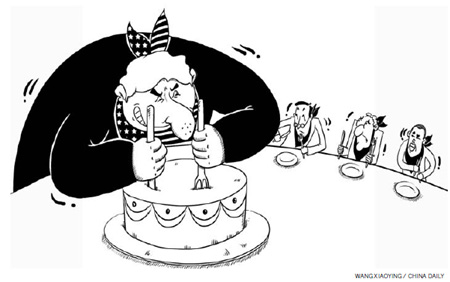
Mar 8, 2016: One of the simplest ways for companies to communicate financial well-being and shareholder value is to say that “the dividend check is in the mail.” Dividends, those cash distributions that some companies pay out regularly to shareholders from earnings, send a clear and powerful message about that company’s current performance and future prospects. A willingness to pay steady dividends over time provides a good clue as to the fundamentals of the company’s business. Yet we seem to be in an era of “missing dividends.”
Investors Ignore Current Income at Their Peril: With the stock market, experience confirms that dividend yield has arguably accounted for almost one-half of stocks’ total return. When inflation is taken into account, then the dividend component represents almost 75% of stocks’ annual investment return. And when the compounding effect of reinvested dividends is further considered, some observers claim that dividends made up about 95% of the compounded long-term return earned by companies in the S&P 500 through 2007.
Similar studies have confirmed the importance of current cash flow (dividends) to investment results. Robert Shiller of Yale, Societe Generale, and the Royal Bank of Canada have all come to similar conclusions.
Where Have All the Dividends Gone? In the U.S., however, fewer and fewer industries offer regular and significant dividends, and such payouts represent an increasingly small portion overall investment returns (which themselves are diminished) Until the 1950s, it was the norm for equities to have a higher yield than bonds; shares were perceived to be riskier, so investors demanded higher payouts for owning them. As larger institutional investors became prevalent, however, the demand for equities increased to a point where equities began to yield below the government-bond yield. These investors, too, believed that there was a tendency for dividends to increase over time, making equities potentially preferable even where their yields were initially below those of bonds.
The opposite fundamental shift has occurred since the financial crisis of 2008, with some investors seeking a higher overall dividend yield on equities to reflect the riskier nature of the income stream. Government bonds are again valued for their safety, especially in a world of low inflation.
It remains the case, though, that the U.S. has relatively few dividend-paying companies compared to other developed countries. Banks were big dividend-payers until the financial crisis of 2008. Energy and mining companies were good income sources but falling commodity prices are leading them to reduce their payouts. The pharmaceutical and health-care sectors seem to be among the few left standing; Standard & Poor’s reported that 504 U.S. companies cut their dividends in 2015, nearly double the number of the previous year.
Real Estate Crowdfunding Addresses the Cash Flow Problem: Real estate crowdfunding of commercial properties can give investors a chance to “have it all” – ongoing cash flow and, with equity investments, participation in potential appreciation. These investments can run the gamut of possible real estate opportunities – from pre-vetted 1st-lien loans to professional fix-and-flip borrowers, to “preferred equity” stakes that offer higher potential returns (and more risk), and finally to equity interests that offer potential appreciation upside as well as certain tax advantages.
RealtyShares, for example, offers investors a chance to participate in interest or rental payments from various types of commercial real estate ventures. These can include large multi-family apartment complexes, retail shopping centers, pools of single-family residences, self-storage facilities, office and industrial buildings, and hotels.
The recurring cash distributions can occur either through the receipt of monthly loan interest payments, monthly preferred equity distributions, or quarterly payouts on conventional equity investments. Debt and preferred equity investments generally have strong remedies available to them if payout schedules are not met; equity payouts are more like dividends, dependent on there being sufficient distributable cash after other expenses are accounted for. Generally, however, the sponsoring real estate companies try to budget carefully so as not to disappoint investors, and investors’ interests are aligned with the sponsor’s by restricting such companies from withdrawing cash for themselves until the investors have been paid their expected returns.
Stable income can provide some degree of protection during periods of stress in the financial markets. Real estate is different from stocks in this respect – the income component accounts for a much larger portion of total returns than it does for stocks, for example. And recent low interest rates have made real estate income properties comparatively attractive.
That Income Can Also Lead to Lower Volatility: The income component of commercial real estate generally helps to temper its volatility as compared to asset classes like stocks, where price movements constitute a bigger portion of overall return rates. Commercial real estate business cycles may be less pronounced — rental lease terms generally help to mitigate economic fluctuations and their impact on income.
Real Estate Crowdfunding – the Key to Better Total Returns? Dividends or other regular payouts are paid from real earnings and in hard dollars – they cannot be manipulated by creative accounting. The regular payout of income can act as a useful barometer to identifying investment projects that are disciplined and efficient in their capital allocation and cash flow management.
Many argue that commercial real estate has other desirable characteristics, such as its serving as a hedge against inflation, offering a portfolio diversification away from stocks and bonds, offering potential tax benefits for equity interests, and nature as a hard asset. Its ability to provide current cash flow, however, is a key component in making it a compelling asset class. When done correctly, commercial real estate investing encapsulates the age-old investment theme of focusing on investments that maintain, and even grow, their income over time.
